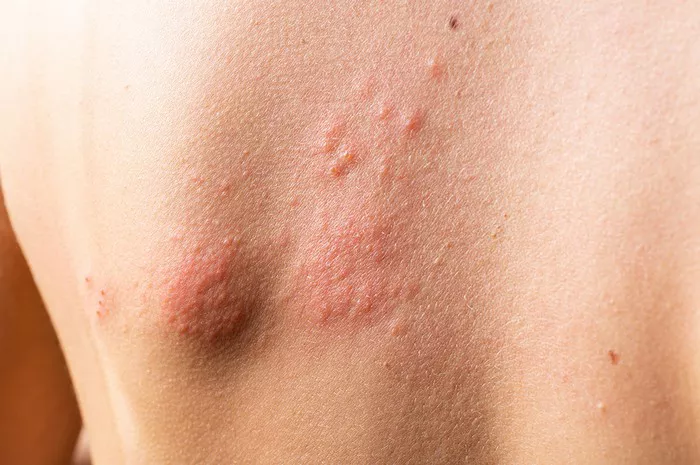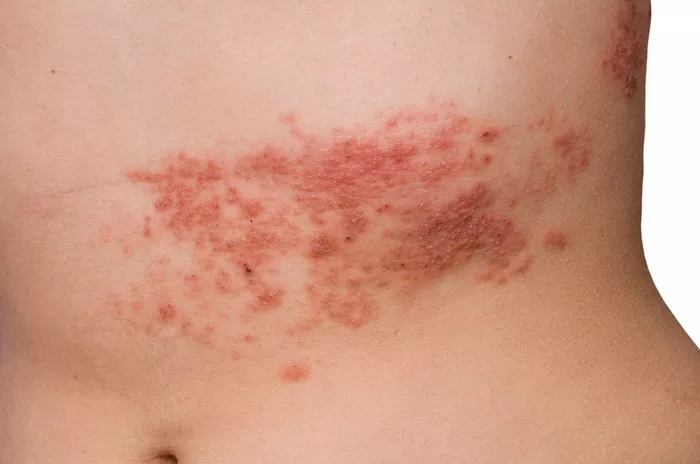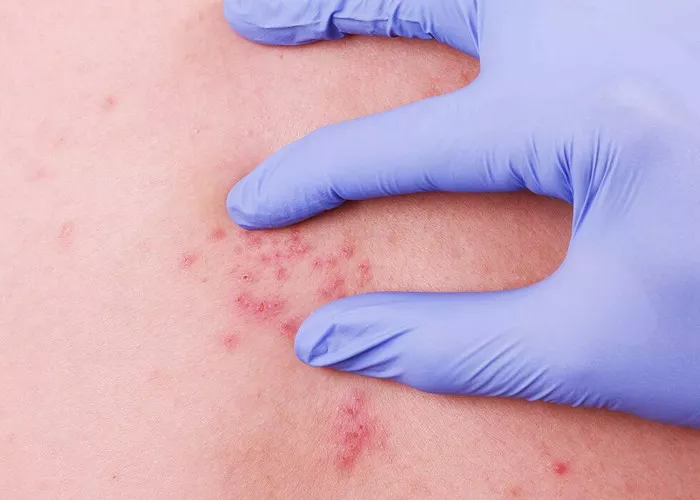Chickenpox is a viral infection that primarily affects children. However, adults can also get chickenpox if they have never been infected or vaccinated. While chickenpox is often thought of as a mild illness in children, it can be much more severe and painful when it occurs in adults. In this article, we will explore how chickenpox affects adults, the pain associated with it, and the treatment options available to manage discomfort.
What Is Chickenpox?
Chickenpox, also known as varicella, is a contagious viral infection caused by the varicella-zoster virus. It is most commonly diagnosed in children, but adults who have not previously had chickenpox or the vaccine can contract the disease as well. The infection is spread through respiratory droplets from coughing or sneezing, or by direct contact with the fluid from chickenpox blisters.
Symptoms of Chickenpox in Adults
When adults get chickenpox, the symptoms are similar to those experienced by children, but they tend to be more severe. The most common symptoms include:
Rash: The hallmark of chickenpox is a red, itchy rash that starts as small spots and then turns into fluid-filled blisters. These blisters eventually break open, crust over, and heal.
Fever: A mild to high fever is common during the first few days of infection.
Fatigue: Adults with chickenpox may feel extremely tired or fatigued.
Headache: Headaches can be a significant problem for many adults with chickenpox.
Body Aches: Muscle pain and soreness are also common.
The rash typically starts on the face, chest, or back and spreads to other parts of the body, including the arms, legs, and sometimes the mouth or genitals.
How Chickenpox Affects Adults Differently Than Children
In children, chickenpox is typically a mild illness that resolves within a week to 10 days. However, in adults, chickenpox tends to be more intense. The rash may cover a larger portion of the body, and the blisters can be larger and more painful. Additionally, adults are more likely to experience complications from chickenpox, which can lead to increased discomfort and longer recovery times.
Is Chickenpox Painful in Adults?
Yes, chickenpox can be very painful for adults. The pain is primarily caused by the rash and blisters that develop on the skin. The blisters can be extremely itchy and may cause a burning or stinging sensation. In some cases, the pain from the rash can be severe enough to affect a person’s ability to move or perform everyday tasks.
The pain usually intensifies when the blisters rupture, as the raw skin beneath the blister is exposed and can become irritated. The area around the blisters may also become swollen, adding to the discomfort. The scabbing process can also be painful as the skin heals and the crusts form.
Pain Beyond the Skin: Internal Complications
In addition to the painful rash, adults with chickenpox may experience internal complications that can contribute to pain. Some of these complications include:
Pneumonia: Chickenpox can lead to pneumonia, which causes chest pain, difficulty breathing, and coughing.
Encephalitis: This is an inflammation of the brain that can cause headaches, confusion, seizures, and in rare cases, long-term neurological problems.
Shingles: After the initial infection, the varicella-zoster virus can remain dormant in the body and reactivate later in life as shingles, a painful condition that causes a rash and severe nerve pain.
Liver Problems: In rare cases, chickenpox can affect the liver, leading to abdominal pain and discomfort.
Why Are Adults More Likely to Experience Painful Chickenpox?
There are several reasons why chickenpox tends to be more painful in adults than in children:
Weaker Immune Response: As people age, their immune systems tend to weaken. This means that an adult’s immune response to the varicella-zoster virus may not be as strong as a child’s, resulting in more severe symptoms.
More Complications: Adults are more likely to experience complications from chickenpox, such as pneumonia or encephalitis, which can contribute to pain and discomfort.
Larger Rash Area: The rash in adults may cover a larger portion of the body and affect more sensitive areas of skin, leading to greater pain and irritation.
How Long Does the Pain Last?
The pain associated with chickenpox typically lasts as long as the rash is active. For most adults, this can be anywhere from 7 to 14 days. The blisters usually begin to form scabs and heal after a week, but some discomfort, such as itching and soreness, may continue until the skin fully heals.
If complications arise, such as pneumonia or encephalitis, the pain and discomfort can last longer, and additional treatments may be required. In cases where shingles develops after the chickenpox infection, nerve pain may persist for weeks or even months, even after the rash has healed.
Treatment Options to Manage Pain
While chickenpox can be painful, there are several ways to manage the discomfort. Here are some of the most common treatment options for relieving pain and speeding up recovery:
Over-the-Counter Pain Relievers
Non-prescription pain relievers like acetaminophen (Tylenol) or ibuprofen (Advil) can help reduce pain and fever associated with chickenpox. However, it’s important to avoid giving aspirin to children and adults with chickenpox because it can lead to a rare but serious condition called Reye’s syndrome.
Antihistamines for Itching
The intense itching caused by the chickenpox rash can be one of the most uncomfortable symptoms. Antihistamines such as diphenhydramine (Benadryl) can help reduce itching and make it easier to sleep. Topical calamine lotion or hydrocortisone creams can also help soothe irritated skin.
Cool Baths
Soaking in a cool bath with colloidal oatmeal or baking soda can help relieve itching and discomfort. Avoid hot showers, as hot water can worsen the itching and irritation.
Antiviral Medications
In some cases, doctors may prescribe antiviral medications, such as acyclovir, to help shorten the duration of the infection and reduce the severity of symptoms. These medications are most effective when started early in the infection, ideally within 24 hours of the appearance of the rash.
Topical Pain Relief
For localized pain from the blisters, topical numbing creams or gels containing ingredients like lidocaine can help reduce pain. These should be used carefully and according to instructions.
Hydration and Rest
It is important to stay hydrated and get plenty of rest to help the body recover more quickly. Dehydration and fatigue can make symptoms worse and prolong the recovery period.
Complications That Can Increase Pain
While most cases of chickenpox resolve without major issues, adults are more prone to complications that can increase pain. Some of these complications include:
Secondary Bacterial Infections: The blisters can become infected with bacteria, leading to further pain and the need for antibiotics.
Shingles: After chickenpox, the varicella-zoster virus can remain dormant in the body and reactivate later in life as shingles. Shingles causes severe nerve pain and a painful rash.
Pneumonia and Organ Damage: In severe cases, chickenpox can affect the lungs, liver, or other organs, leading to additional pain and medical intervention.
Preventing Chickenpox and Its Painful Effects
The best way to prevent the pain of chickenpox is to avoid contracting the virus in the first place. The chickenpox vaccine is highly effective in preventing the infection, and getting vaccinated is the most reliable way to reduce the risk of chickenpox in adults.
For adults who have never had chickenpox, it’s a good idea to get the vaccine, as it can prevent both the disease and the complications that make it painful. If you have already had chickenpox, the risk of getting it again is low, but it is still possible for the virus to reactivate as shingles later in life.
Conclusion
Chickenpox can be a painful and uncomfortable experience for adults. While children typically recover from the illness with minimal pain, adults are more likely to experience severe symptoms, including a painful rash, headaches, body aches, and complications such as pneumonia or encephalitis. Fortunately, there are several treatments available to manage the pain and discomfort associated with chickenpox. If you are an adult who has never had chickenpox or the vaccine, consider getting vaccinated to protect yourself from this painful condition.
Related topics:


























